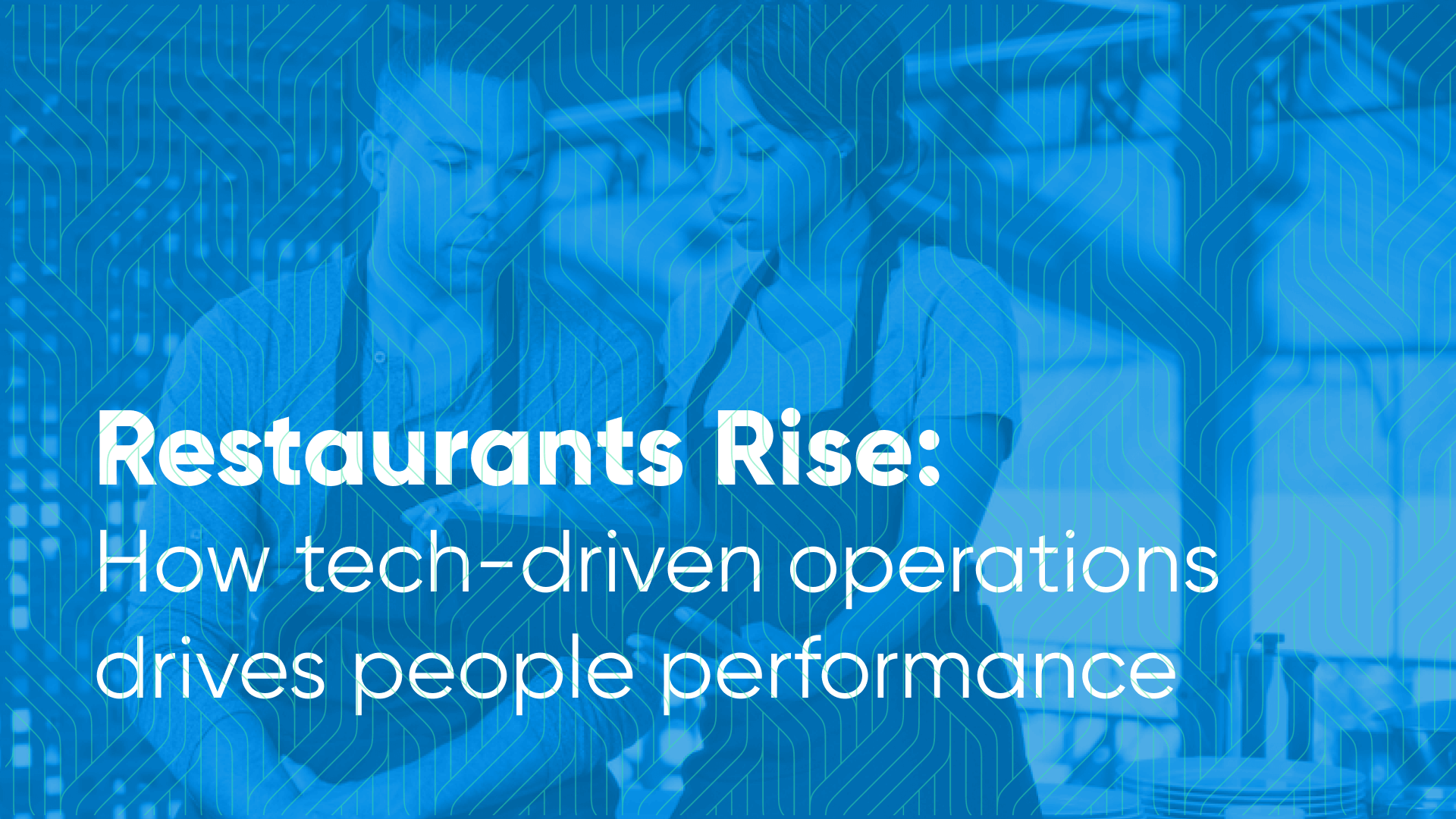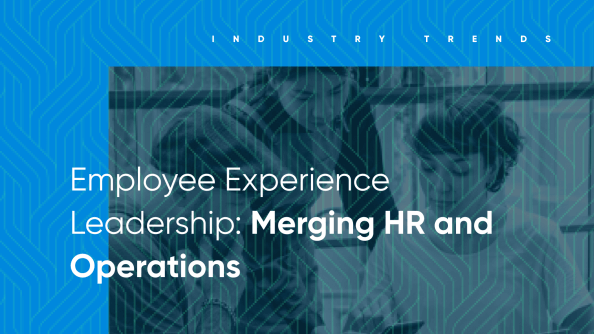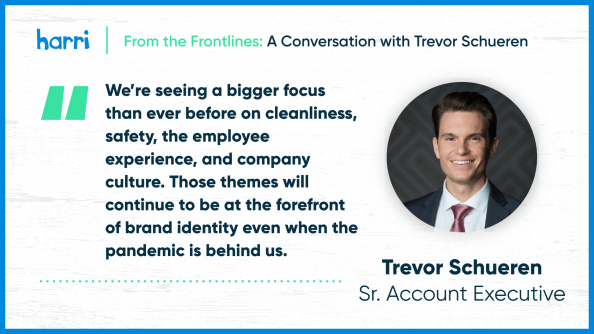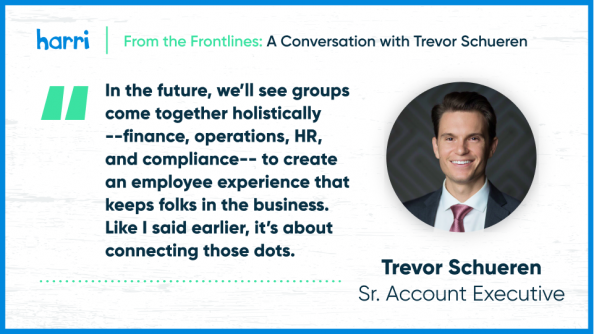Restaurants Rise: How Tech-driven Operations Drive People Performance

- By Harri Insider Team | January 26, 2021
Nancy Luna, Senior Editor of Restaurant News & Restaurant Hospitality, was recently joined by Scott Boatwright, Chief Restaurant Officer at Chipotle Mexican Grill, in a Restaurants Rise webinar discussing the role of technology in people operations.
In this session, Boatwright discusses using technology to develop strong team connections and setting your employees for success as key themes, especially during COVID-19. Without tech adoption, the restaurant industry would be nowhere near where it is today. Boatwright emphasizes that, just as office employees experience “an endless cycle of Zoom calls and screen fatigue,” the restaurant industry has also “endured tremendous impact” that will shape the future of the industry even beyond the pandemic.
Luckily, the restaurant industry is resilient — partially due to the integration of technology. Below we dive into key insights from Boatright, how Chipotle uses tech-driven people operations to find success, and how those principles can be applied to any service-based business.
Laying a solid foundation with technology
Since the start of COVID-19, Chipotle has been extremely agile. The brand saw a huge shift towards the employee experience in terms of improved processes, new benefits, increased pay, paid out discretionary bonuses, and a teleconference medical care company for their employees.
None of this would have been possible without Chipotle’s quick adoption of HCM tech, and Boatwright hones in on how the pressure to adopt technology-driven operations was a silver lining for the brand.
Pencil-and-paper management methods are prone to human error, yet a surprising number of enterprise-grade restaurants rely on these outdated processes to plan and execute daily operations. As more businesses shift gears towards tech solutions, like all-in-one HCM platforms, we’re seeing a rise in the ways technology can not only fit into, but improve restaurant operations.
Boatwright drills into the key benefits that drive business performance when technology and operations go hand-in-hand:
- Accelerates and enables smarter operations
- Standardizes operating procedures
- Quantifies data
- Provides insight and analytics
- Manages cross-functional business procedures
- Anticipates needs
These benefits don’t stop at the business level, they boost confidence levels for managerial staff by minimizing effort and maximizing output.
Take the arduous task of scheduling, for example. When a manager has to focus on picking the right team members to work different shifts, predicting service demand in today’s unpredictable environment, and stay labor law compliant, it’s a wonder they have time to manage anything else on their plates.
However, the right tech can do the hard work for those managers. Intelligent scheduling takes the hard work out of labor planning by factoring in historical sales data, location-based labor regulations, and even employee-driven schedule changes. That means a lot of time and effort saved for managerial staff.
When your team is set up for success, they’re in a better position to focus on the customers’ needs and deliver excellent service.
Empower your people, better serve your customers
While there’s no doubt that tech-driven operations improve workplace efficiency, there are more humanistic benefits that are gained. Tech adoption drives stronger people performance which always leads to better business performance.
HCM technology is an excellent means to free up managers, empowering them to focus on people rather than processes. Boatwright highlights the need for taking a people-first approach, “technology is not a business model, our industry is still a people business,” and notes how overwhelmed teams are simply unable to provide the level of service needed to operate a restaurant, especially during COVID-19.
That kind of thinking lends itself to great company culture which comes with its own set of benefits. Happier employees stay with a business longer, reducing the hard and soft costs associated with turnover. Using HCM tech to establish employee communications across all levels helps brands gauge team sentiment, listen to their concerns, and take well-informed steps to boost team morale.
What’s more, motivated staff are more likely to take the extra step in creating a great guest experience. Take ARC Group, for instance. Their focus on company culture leads to highly engaged employees that proactively seek to better the brand. Customer car washes, an employee-dreamt idea, was so well-received that it boosted sales for the company.
ARC Group attributes that kind of contribution to a family-like culture for front-line employees, which is echoed by Boatwright, “innovation has to be a norm, not just dreamed up by folks in a corporate office.”
No technology can make up for a great purpose and top talent, and as he puts it, “the satisfaction of our guests will never exceed that of our team members.”
Taking the first step
Adopting HCM tech to streamline people and labor operations may seem like a daunting task, but the right tools will ensure a smooth transition for your teams, no matter how complex your labor needs are. As the future of the hospitality industry leans on technology to empower their workers, brands that fail to keep up will be left in the dust.




















